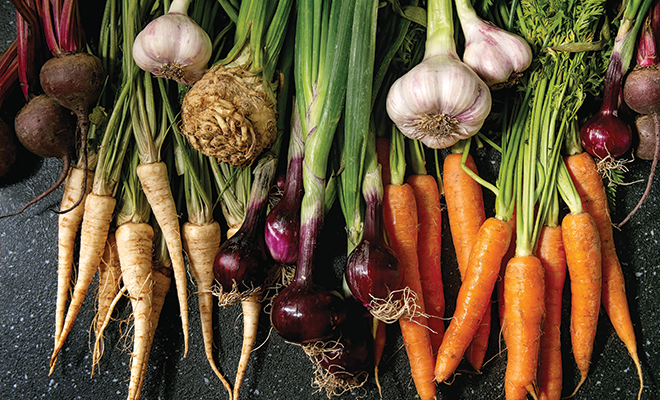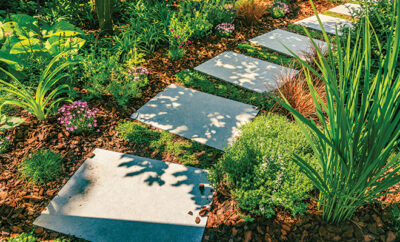
It’s Easy to Grow Your Own Veggies with Straw Bale Gardening
Nearly a decade ago, an editor sent me to cover a homegrown story about a new method of gardening invented by horticulturist Joel Karsten. Karsten wanted to grow his own vegetables, but the soil at his small suburban home was poor and he didn’t have the finances to build raised beds.
Then, he remembered that on his family’s Minnesota farm, weeds would suddenly show up on seemingly inert bales of straw. It gave him an idea. He started experimenting with his own bales, adding various kinds of fertilizers, and he found that the bales quickly became an ideal growing medium. His new/old technique ended up in a feature story on a local television station and later in The New York Times. Overnight, he became a celebrity among gardeners everywhere. I covered one of his early seminars, which is where I discovered straw bale gardening.
Straw bales, essentially an easier and cheaper type of container gardening, seemed to be an effective way to extend my garden space. For ten years, I’d grown vegetables–various greens, beans, cucumbers and the like – in the rototilled sunny half of my tiny backyard. The shaded half of the yard is reserved for my bulldog. A smaller garden on the side of the house had limited sun but could grow summer and winter squash. Tomatoes, my favorite veggie, didn’t do well in either.
I looked for the sunniest spot I could find, a far corner of my front lawn. The first year, we started with six bales. Last year, we brought home a dozen. Note that these are straw bales, not hay bales. Bring home hay bales and you’ll grow hay.
The technique is fairly easy. Set the bales in a sunny spot with the cut side up, leaving the string intact. Then, begin the vital step of preparing the bales with a nitrogen-rich fertilizer. Ask at the nursery for a recommendation for your area. Conditioning helps the bale decay to become rich compost.
Conditioning the bales takes about two weeks, so plan ahead. For the first six days we watered the bales each day, adding fertilizer every other day. We repeated the process for the next four days, adding half the amount of fertilizer. Finally, we let the bales rest for a couple of days. For exact amounts and timing, consult Karsten’s book, Learn to Grow a Straw Bale Garden.
Planting is easy. Take your trowel, dig a small hole, add some potting soil and your vegetable. Our first year, we grew tomatoes, cauliflower and flowering kale on the top, with peppers and basil planted in the sides. You can plant rows of seeds, too. We also took a few seed potatoes and threw them under the bales; in the fall, when the bales finally fell apart, we had a lovely crop of spuds.
Expect a few stray weeds to sprout and maybe some mushrooms will pop up. You might notice some mold, but ignore these since they won’t hurt anything and will soon disappear. Mostly, you won’t have to weed or fuss. Once the conditioning and planting is done, most of the work is over. You have to water the plants, just as you would any garden. If you grow tomatoes or vines, you will need to cage them, as they will grow tall.
Straw bale gardens are much less labor intensive than standard gardens. There’s no bending down required. The plants are safe from rabbits that can’t reach the vegetables growing on top of the bales. If you live in a colder climate, you can plant earlier since you don’t have to wait for the soil to warm. And, it’s easy to go organic.
Bales can be placed on tainted soil, even on concrete, so those without the option of digging a garden can still grow their own produce. For experienced gardeners or beginners, straw bales might be the way to go. Straw bales are being used successfully in climates from the arctic to the equator, in rain forests and deserts. Recently, the technique was introduced to Cambodian farmers who were experiencing crop failures because of seasonal droughts and floods, part of a growing movement to use straw bales to fight hunger around the world.
Straw bale gardening continues to gain popularity in the United States as growers discover its many advantages. When I first started growing vegetables in straw bales, most of my local plant nurseries knew little about the technique. Today, most garden stores will be able to not only sell you all you need – just straw bales, a trowel, nitrogen fertilizer and a garden hose – their experts can answer any questions you may have. It’s fun to grow your own food and at harvest time, you’ll be the envy of your neighbors who might come to you next year to learn the secrets of straw bale gardening. ■
Sources: nytimes.com, strawbalegardens.com and twin-cities.umn.edu.







